- Home
- Blog
- Data Modeling
- Data Modeling Tutorial for Beginners

Data Modeling is the idea of designing a database structure that defines the functions of a database. It is a fundamental step to create a database and a specific data model that drives the database diagrams. Data Models are the basic entities to define DBMS.
| In this Data Modeling, I will be discussing the following topics: |
What is Data Modeling?
Data Modeling is the process of building a data model for the data store in the database. It is a theoretical representation of data objects among several data objects.
It is the process of formulating the data in a structured format that helps in analyzing data easily that allows in meeting business requirements in the future. Data models ensure consistency in default values, naming conventions, security, and semantics to provide quality data.
| If you want to enrich your career and become a professional in Data Modelling, then visit Mindmajix - a global online training platform: "Data Modelling Certification Training" This course will help you to achieve excellence in this domain. |
What is the Data Model?
Data Model is a structure that is used to organize the data semantics, data description, and consistency of data.
The data model highlights what data is required and how it is structured. For instance, a Data model is like an architect’s building plan, which guides to build conceptual models and sets a relationship between data elements.
Uses of Data Model
The uses of the Data Model are as follows:
- A data model helps to design the database at three different levels, such as Conceptual, Logical, and Physical.
- It gives a clear structure of the database and is used by the developers to create a physical database.
- It helps to define the stored procedures, relational tables, physical and foreign keys.
- It ensures that the database represents all data objects. It identifies the deleted data that leads to the production of incorrect results and the creation of duplicate reports.
- The data model illustrates a better understanding of business requirements.
- It guides in identifying duplicate, redundant, and missing data.
- It helps to develop a robust design that brings the entire data of an organization in the same platform.
- Visual representation of data helps to improve the analysis of data. It offers a holistic picture of data that can be used by developers to create a database.
Three categories of Data Model
The three categories of Data models are Conceptual, Logical, and Physical data models. Data models are used to define the data and how it is stored in a database and to set a relation between data elements.
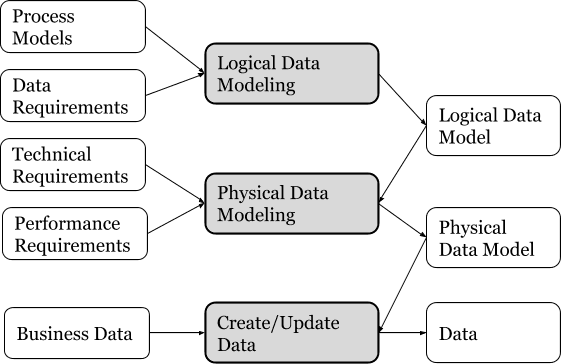
Conceptual Data Model
The Conceptual Data Model is used to define what the system includes. It is used to organize, scope, and illustrate business concepts.
The purpose of creating a conceptual data model is to develop entities, relationships, and attributes. Data architects and stakeholders are usually making a conceptual data model.
The three primary holders of the Conceptual Data Model are
- Entity: A real-life thing
- Attribute: Properties of an entity
- Relationship: Association between two entities
Let’s check out an example of this data model.
Take two entities, such as product and customer. The product name and price are the attributes of the Product entity, and the Customer name and number are the attributes of the Customer entity. The relation between these two entities is Sales.
- Conceptual Data Model was designed and developed for a business audience.
- It provides an organization-wide description of business concepts.
- It is developed independently with hardware specifications such as location, data storage capacity, or software specifications such as technology and DBMS vendor.
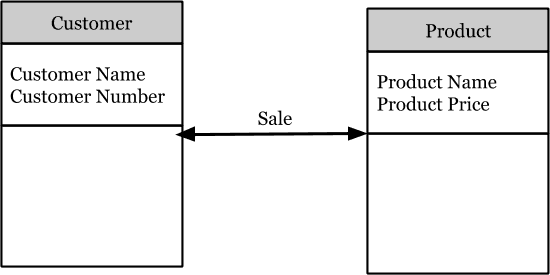
Logical Data Model
The Logical Data Model is used to define the structure of data objects and to arrange a relation between them. It provides the foundation to form a physical model. This model helps to add further information to the conceptual data model elements. In this model, there is no primary or secondary key is not defined. This model allows users to adjust and verify the connector details that are set before for relationships.
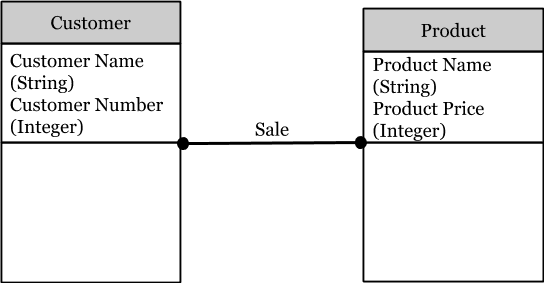
The logical Data Model describes data requirements for a single project but integrates with other logical data models depending on the scope of the project. Data attributes have various data types with exact lengths and precisions.
- The logical data model is developed and designed independently from the DBMS.
- Data attributes have data types with exact dimensions and precisions.
- It defines the data required for a project but integrates with other logical data models depending on the scope of the project.
Physical Data Model
The Physical Data Model defines a database implementation of a data model. It provides database attraction and helps to generate the schema. This data model helps to visualize the database structure by duplicating database constraints, triggers, column keys, other RDMS features, and indexes. In this model, the views, access profiles, authorizations, primary and foreign keys, etc. are defined.
Data Model includes the relation between tables that describes the majority and minority relationships. It is developed for a particular version of a DBMS, data storage, location to be used in the project.
| Related Article: Check Out Data Modelling Interview Questions |
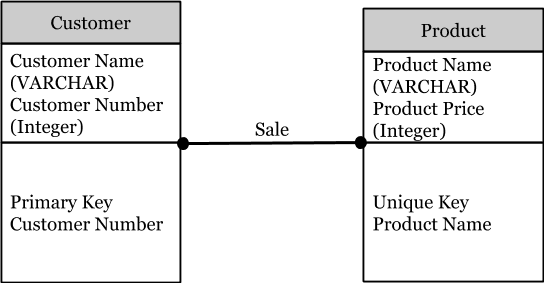
- The Physical Data Model was developed for a version of DBMS, data storage, a location that is used in the project.
- It includes relationships between tables that address nullability and cardinality of the relationships.
- It defines views, access profiles, authorizations, primary and foreign keys, etc.
Types of Data Models
The Data Model defines the design and structure of a database and even defines how data is stored, updated, and accessed in the Database Management System (DMS). There are several types of data models that are discussed below.
Related Article: Big Data Modeling
Entity-Relationship Model
Entity-Relationship Model is a graphical representation of entities and respective relationships. While creating a real-world scenario as a database model, the E-R model creates an entity set, attributes, relationship set, and constraints. Such graphical representation is also known as the E-R diagram.
An entity can be an object, a concept, a piece of data regarding the data is stored. It contains properties called attributes, and the set of values called domain defines each attribute. The Logical connection among entities is known as a relationship. These relationships are mapped with entities in several ways.
Let’s take a College Database as an example, a Student as an entity, the Student details such as Name, ID, Age, Address, etc. are the Attributes. And hence, there will be a relationship between them.
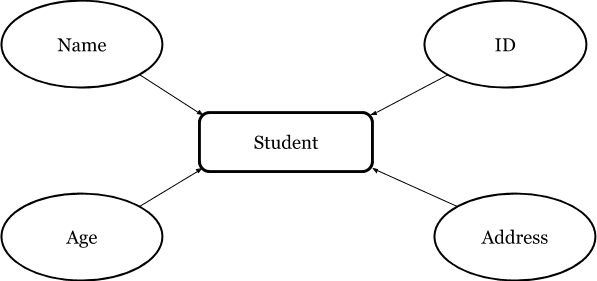
Hierarchical Model
The hierarchical model is used to organize the data into a tree-like structure, with a single root where data is connected. Such a single root expands like a tree adding nodes to the parent nodes, where a child node will have only a single-parent node.
In this model, the data is organized into a hierarchical structure with a one-to-many relationship between two various types of data. For instance, in a college, a department includes no. of courses, respective professors, and students.
| Related Article: Top 25 Data Modelling Tools |
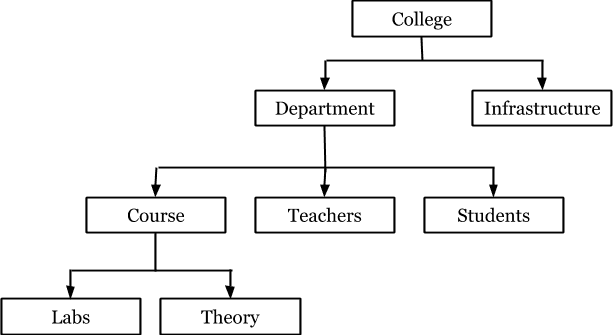
Network Model
The Network Model is an extension of the Hierarchical Model, where it allows various relationships with linked records that implies multiple parent records. It will enable users to construct the model with sets of related records as per the mathematical set theory. Such a set includes a parent record and the number of child records. Each record belongs to multiple sets and enables the model for defining complex relationships.
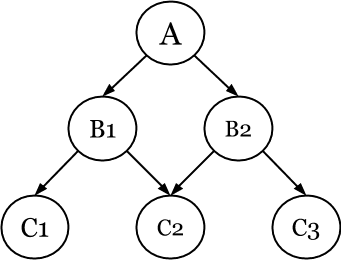
Object-oriented Database Model
The Object-oriented Database Model includes a collection of objects that are associated with methods and features. It is also known as a post-relational database model as it incorporates tables and is not limited to tables. Such database models are known as hybrid models. There are various types of object-oriented databases, such as the hypertext database, multimedia database, etc.
Object-relational database
An Object-relational Data Model is a combination of an Object-oriented database model and a Relational database model. It supports classes, objects, inheritance, etc. like the Object-oriented model and even supports data types, tabular structures, etc. like the Relational database model. This model enables designers to incorporate the functions into a table structure.
Relational Model
The Relational Model helps to organize the two-dimensional tables, and a common field maintains the relationship. The structure of data in a relational data model is the tables. All the data regarding a specific type is stored in rows of the table. These tables are known as relations in the Relational Model.
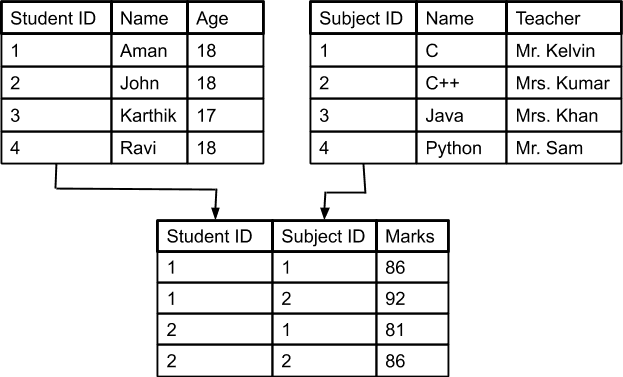
Advantages of Data Modeling
The advantages of Data Modeling are as follows.
- Data objects provided by functional teams are presented precisely.
- Data modeling enables users to query data from the database and derive various reports based on the data. These reports help to improve the productivity and quality of the project.
- Data modeling offers a structured model for an unstructured form of data.
- Data modeling enhances business intelligence by producing data modelers work closely with the real-time project that includes gathering data from spending patterns, reporting requirements, etc.
- It improves communication across and within the organization.
- It helps to generate document data mapping in the ETL process.
- The data model must be detailed enough for creating a physical database.
Disadvantages of Data Modeling
The disadvantages of Data Modeling are as follows:
- To build a data model, it is required to be aware of the physical features of the data storage.
- It is a navigational system that builds complex application management, development, and biographical truth.
- Even a small change made in the structure requires modification in the complete application.
- There is no set of data manipulation languages in DBMS.
Conclusion
On a final note, the main aim of the data model is to ensure that functional teams create data objects that are represented correctly or not so that it guides to build a physical database. A data model explains the business rules, regulatory compliance, and government policies on the data. Several types of open-source Data Modeling are available in the market.
 On-Job Support Service
On-Job Support Service
Online Work Support for your on-job roles.

Our work-support plans provide precise options as per your project tasks. Whether you are a newbie or an experienced professional seeking assistance in completing project tasks, we are here with the following plans to meet your custom needs:
- Pay Per Hour
- Pay Per Week
- Monthly
| Name | Dates | |
|---|---|---|
| Data Modeling Training | Jan 17 to Feb 01 | View Details |
| Data Modeling Training | Jan 20 to Feb 04 | View Details |
| Data Modeling Training | Jan 24 to Feb 08 | View Details |
| Data Modeling Training | Jan 27 to Feb 11 | View Details |

Keerthana Jonnalagadda working as a Content Writer at Mindmajix Technologies Inc. She writes on emerging IT technology-related topics and likes to share good quality content through her writings. You can reach her through LinkedIn.


